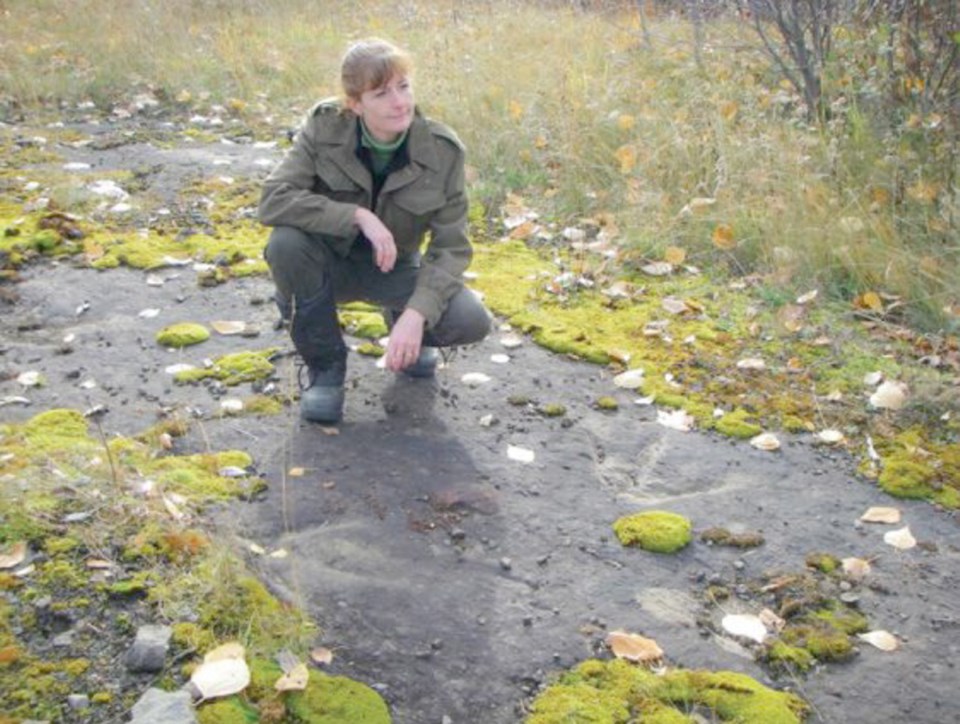Scientists in Tumbler Ridge are hoping to save an important piece of palaeontology in an area that’s lost many important sites.
Representatives of the Peace Region Palaeontology Research Centre made a presentation to the City of Fort St. John council, asking for their informal support in preserving an area about one square kilometer in size near Williston Lake.
From the air, it may not look like much — just an empty plot of land. But if you get in close, tracks of a predator that stalked the area millions of years ago are visible to the naked eye.
About 115 to 117 million years ago, allosaurs roamed the land where Canada now sits. These were mighty predators similar in appearance to another famous dinosaur, the Tyrannosaurus Rex.
Allosaurs averaged 28 feet in height and were bipedal predator animals.
On that spot near Williston Lake, some allosaurs tracks have been preserved for millions of years.
In 2008, these tracks, which resemble those of a bird’s, were discovered by some Peace Region residents, who then reported the find to Dr. Charles Helm, according to Rich McCrea, the Research Centre’s paleontology curator. Helm confirmed to the local residents that they had made an historic find.
However, the small band of palaeontologyresearchers at the time didn’t have the resources to properly attempt to preserve them, said McCrea.
Now they're looking for help from companies and municipalities so they can do their work — financial or otherwise.
“[An informal designation] right now would be a good place to start,” said McCrea. “This is part of the proposal, we actually need to get on the ground and work on this site. That involves doing the “r” word – research.”
Once there, they can excavate or clear the site, so they can document the dinosaur tracks and analyze the feasibility of doing some kind of tourism development.
Ultimately, they're hoping to preserve the area as a tourist attraction, and develop Northeast B.C. as a vacation spot for dinosaur enthusiasts.
Preserving the Williston Lake area will mean it will avoid the fate of other nearby sites.
In the 1920s, scientists were told about tracks of similar dinosaurs. But those tracks were lost when the area was flooded for the W.A.C. Bennett and the Peace Canyon dams.
“If they were exposed today, they’d be among the top track sites in the world, because those were the first Cretaceous dinosaur tracks to be described anywhere.”
Currently the Williston Lake site faces no imminent threat from industrial development.
McCrea sees a lot of potential in the area for tourism.
“There’s people that have a main goal in mind, and maybe it’s a trip to Alaska, but you try and slow them down and keep them in the area for a little longer than they normally would be,” he said.



